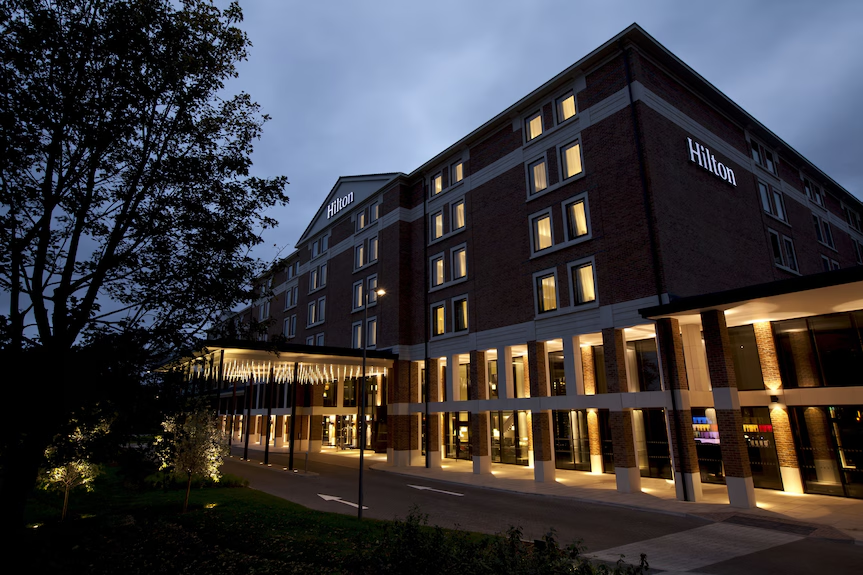The Grandeur of Indian Weddings: A Celebration of Love, Culture, and Tradition
- Manny Singh
- No Comments
Table of Contents
Indian weddings are known for their grandeur, extravagance, and rich cultural traditions. They hold immense significance in Indian culture and are considered one of the most important events in a person’s life. Indian weddings are not just a union of two individuals, but also a celebration of love, family, and community. They are a reflection of the diverse cultural heritage of India and showcase the customs and traditions that have been passed down through generations.
Key Takeaways
- Indian weddings hold great significance in culture and tradition.
- Pre-wedding celebrations like Sangeet and Mehendi are extravagant and fun-filled.
- Family and community play a crucial role in Indian weddings.
- Religious ceremonies are an important part of Indian weddings.
- Indian wedding attire and jewelry hold deep symbolism.
The Significance of Indian Weddings in Culture and Tradition
Indian weddings have a deep-rooted historical and cultural significance. They date back thousands of years and have evolved over time, incorporating various rituals and customs from different regions of India. These weddings are not just about the union of two individuals, but also about the coming together of two families and their respective cultures.
Marriage holds immense importance in Indian society. It is seen as a sacred bond that not only unites two individuals but also brings together their families. In Indian culture, marriage is considered a lifelong commitment, and the wedding ceremony is seen as a way to seek the blessings of the gods for a happy and prosperous married life.
The Extravagant Pre-Wedding Celebrations: Sangeet, Mehendi, and More
Indian weddings are not just limited to the wedding day itself; they are preceded by a series of pre-wedding celebrations that add to the excitement and joy of the occasion. One such celebration is the Sangeet ceremony, which involves singing, dancing, and music performances by family members and friends. It is a way for both families to come together and celebrate the upcoming wedding.
Another important pre-wedding celebration is the Mehendi ceremony, where intricate henna designs are applied to the bride’s hands and feet. This ceremony is considered auspicious and signifies love, beauty, and good luck. It is also an opportunity for the bride to bond with her female relatives and friends.
Other pre-wedding celebrations include the Haldi ceremony, where a paste made of turmeric is applied to the bride and groom’s bodies to cleanse and purify them before the wedding. There is also the Tilak ceremony, where the groom’s forehead is adorned with a mark made of sandalwood paste and vermillion, symbolizing his acceptance into the bride’s family.
The Role of Family and Community in Indian Weddings
Family and community play a crucial role in Indian weddings. Weddings are seen as a union not just between two individuals, but also between two families. The involvement of family members in the wedding preparations and ceremonies is considered essential.
Different family members have specific roles to play in Indian weddings. The parents of the bride and groom are responsible for organizing and hosting the wedding ceremonies. They also play a significant role in arranging the marriage and ensuring that all customs and traditions are followed.
Other family members, such as siblings, aunts, uncles, and cousins, also have important roles to play. They assist in various tasks, such as decorating the venue, coordinating with vendors, and participating in the pre-wedding celebrations. The involvement of family members creates a sense of togetherness and strengthens the bond between families.
Community members also play a vital role in Indian weddings. They are invited to attend the wedding ceremonies and bless the couple. Their presence adds to the joyous atmosphere and creates a sense of unity within the community.
The Importance of Religious Ceremonies in Indian Weddings
Religious ceremonies hold great significance in Indian weddings. India is a diverse country with various religions, and each religion has its own set of customs and rituals associated with marriage.
Hindu weddings are known for their elaborate rituals and ceremonies. The main ceremony is called the “Vivaha,” which involves the exchange of vows and promises between the bride and groom, as well as the tying of the sacred thread known as the “Mangalsutra.” Other important rituals include the “Saptapadi,” where the couple takes seven steps together around a sacred fire, symbolizing their journey through life together.
Muslim weddings, known as “Nikah,” are relatively simpler but equally significant. The ceremony involves the signing of the marriage contract in the presence of witnesses. The bride and groom exchange vows and rings, and a sermon is given by an Islamic scholar.
Sikh weddings, known as “Anand Karaj,” are characterized by their simplicity and focus on spirituality. The ceremony takes place in a Sikh temple, or Gurudwara, and involves the reading of hymns from the Sikh holy book, Guru Granth Sahib. The couple takes four rounds around the holy book, symbolizing their commitment to each other.
The Symbolism Behind Indian Wedding Attire and Jewelry

Indian wedding attire and jewelry hold great significance and symbolism. The bride’s attire is usually a traditional outfit, such as a saree or lehenga, in vibrant colors like red, gold, or maroon. These colors symbolize fertility, prosperity, and good luck.
The jewelry worn by the bride is also of great importance. It is believed to enhance her beauty and bring good fortune. Traditional Indian bridal jewelry includes necklaces, earrings, bangles, and anklets made of gold or precious stones. Each piece of jewelry has its own significance and is passed down through generations as a family heirloom.
The Delicious Feast: A Highlight of Indian Wedding Celebrations
Food plays a central role in Indian weddings. A lavish feast is an integral part of the celebrations and is eagerly awaited by all guests. Indian cuisine is known for its rich flavors and variety of dishes.
The wedding feast typically includes a wide range of vegetarian and non-vegetarian dishes, such as biryani, butter chicken, paneer tikka, and various types of bread like naan and roti. There are also a variety of sweets and desserts, such as gulab jamun, jalebi, and kheer.
The food served at Indian weddings is not just about satisfying hunger; it is also a way to showcase the hospitality and generosity of the hosts. It is a way to bring people together and create a sense of camaraderie among guests.
The Traditional Wedding Rituals and Customs
Indian weddings are known for their rich traditions and rituals. These rituals have been passed down through generations and hold great significance in Indian culture.
One such ritual is the “Kanyadaan,” where the bride’s father gives her away to the groom. It symbolizes the father’s acceptance of the groom as his daughter’s husband. Another important ritual is the “Mangal Phere,” where the couple takes seven rounds around a sacred fire, each round signifying a vow they make to each other.
Other customs include the “Joota Chupai,” where the groom’s shoes are hidden by the bride’s sisters and returned only after receiving a ransom. This playful tradition adds an element of fun and excitement to the wedding.
The Music and Dance: An Integral Part of Indian Weddings
Music and dance are an integral part of Indian weddings. They add joy, energy, and entertainment to the celebrations. Different regions of India have their own unique music and dance forms that are performed during weddings.
In North India, the traditional dance form performed at weddings is called “Bhangra.” It involves energetic movements and is accompanied by lively Punjabi music. In South India, the traditional dance form performed at weddings is called “Bharatanatyam.” It is a classical dance form that involves intricate footwork and expressive hand gestures.
Music also plays a significant role in Indian weddings. Traditional Indian instruments, such as the tabla, sitar, and dholak, are played during the ceremonies and celebrations. Bollywood songs are also popular and are played during the Sangeet ceremony, where family members and friends perform dance routines.
The Artistic Decor and Stunning Venues of Indian Weddings
Decor and venue selection are important aspects of Indian weddings. The decor is usually elaborate and reflects the cultural heritage of the couple. It includes vibrant colors, flowers, and traditional motifs.
Indian weddings are often held in grand venues, such as palaces, banquet halls, or outdoor gardens. These venues provide a majestic backdrop for the celebrations and add to the overall grandeur of the event.
The Emotional Journey of an Indian Wedding: Love, Joy, and Togetherness
An Indian wedding is not just a celebration; it is an emotional journey filled with love, joy, and togetherness. It is a time when families come together to celebrate the union of two individuals and bless them for a happy married life.
The wedding ceremonies and rituals create a sense of unity and bonding among family members and friends. They bring people together and create lasting memories that will be cherished for a lifetime.
Indian weddings hold immense significance in Indian culture and tradition. They are not just about the union of two individuals; they are a celebration of love, family, and community. From the extravagant pre-wedding celebrations to the traditional rituals and customs, every aspect of an Indian wedding is steeped in history and symbolism.
The beauty of Indian weddings lies in their ability to bring people together and create a sense of togetherness. They showcase the rich cultural heritage of India and serve as a reminder of the importance of love, joy, and unity in our lives. Indian weddings are truly a celebration of life itself.
Share this Post






















Add your first comment to this post